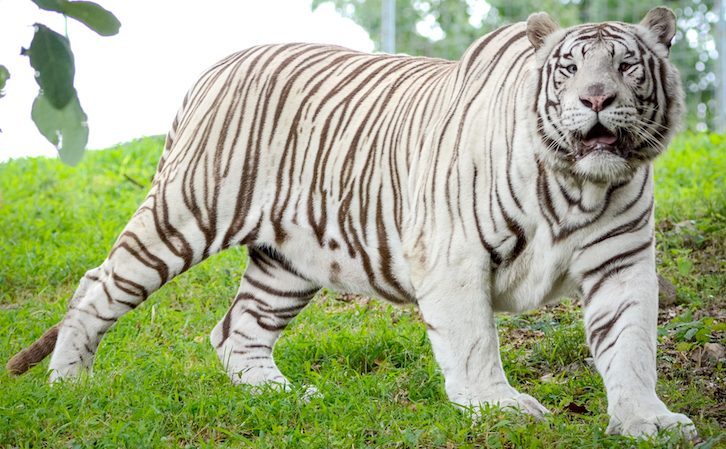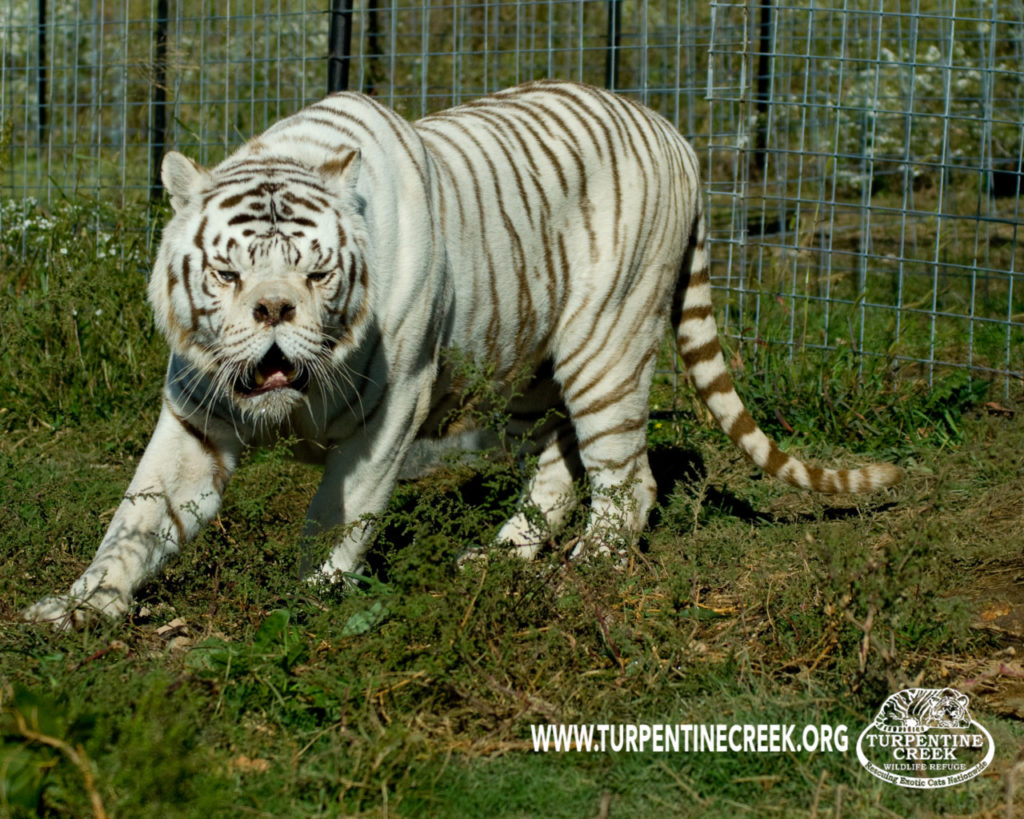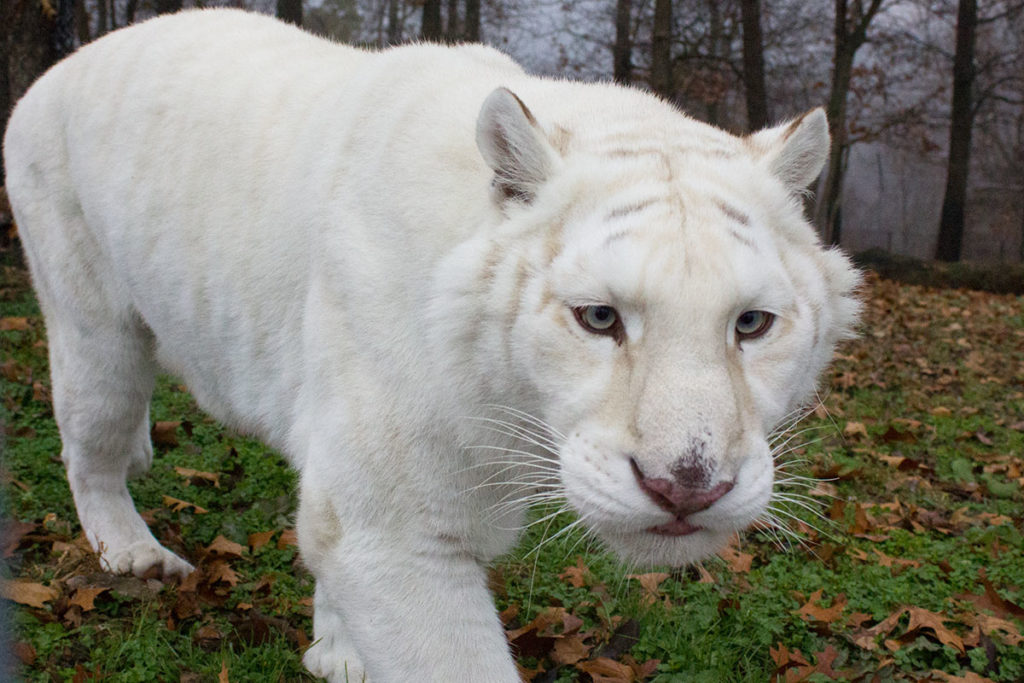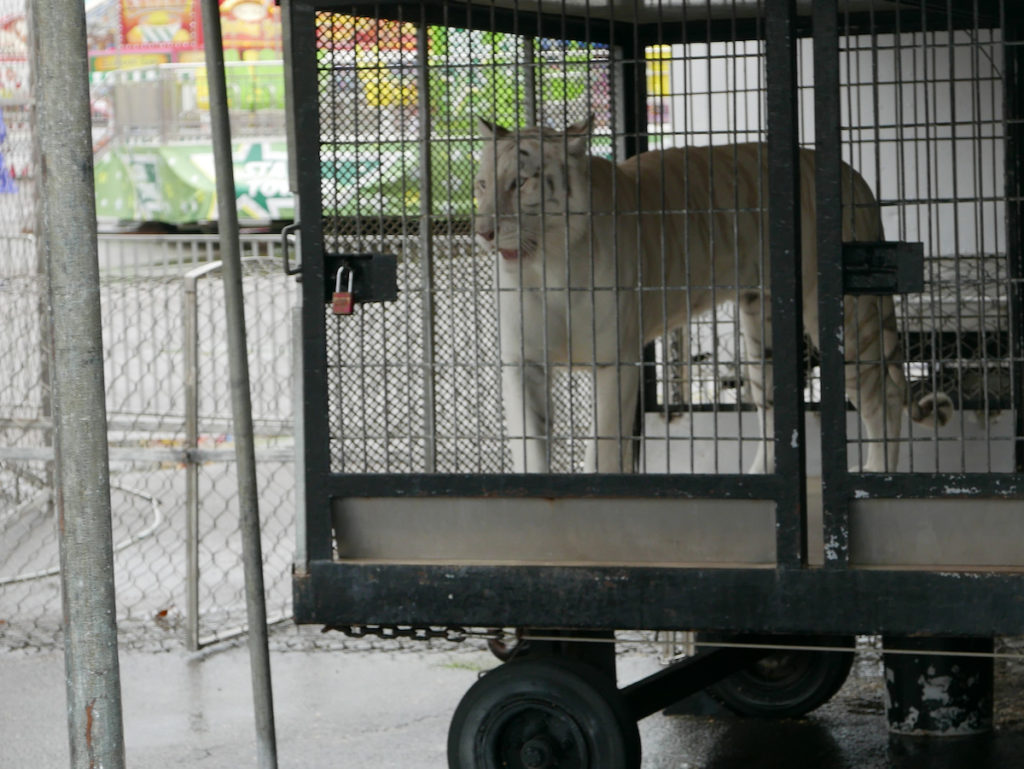What 20/20 Left Out Of Their Siegfried And Roy Special
October 1, 2019
 This past Friday, 20/20’s premier show featured Siegfried and Roy, two names that are recognized worldwide for their magic show performances that included white tigers along with a menagerie of other exotic animals. Their show ran in one form or another for over 30 years, but ended when one of the magicians, Roy, was almost killed by one of their white tigers, Mantacore.
This past Friday, 20/20’s premier show featured Siegfried and Roy, two names that are recognized worldwide for their magic show performances that included white tigers along with a menagerie of other exotic animals. Their show ran in one form or another for over 30 years, but ended when one of the magicians, Roy, was almost killed by one of their white tigers, Mantacore.
Turpentine Creek Wildlife Refuge was interviewed by a 20/20 team about the mistreatment of these animals, why magic shows are detrimental to the health of the animals, and about white tiger inbreeding. Sadly, the interview with Turpentine Creek’s big cat experts, President Tanya Smith and Animal Curator Emily McCormack, was reduced to a short five-minute segment that focused solely on the inbreeding of white tigers.
“These are inbred animals that all come back to one animal: the first white tiger that was captive. Mohan was bred back to his daughter to try to produce this white tiger, so that is where the inbreeding came about,” explained Emily McCormack on the 20/20 episode.
Afterward, 20/20 correspondent Deborah Roberts claimed, “There have been no reports of abnormalities with Siegfried and Roy’s white tigers. In fact, they say they practice conscientious breeding to avoid mating tigers that are closely related, and they say they stopped breeding tigers back in 2015.”
Despite this argument, factual information dictates that all white tigers are related. Though Siegfried and Roy may not have been breeding brother and sister or mother and son, absolutely no white tiger breeding is truly “conscientious.” Also, there may have been no reported “abnormalities” with the magicians’ tigers, but all white tigers share the same faulty genetics and predisposition for a number of diseases and deformities.
 Roberts then brought up Kenny, a white tiger rescued by TCWR nearly 2 decades ago, who became the “poster child” for the problems of inbreeding after a photo of him falsely claiming he had Down Syndrome went viral.
Roberts then brought up Kenny, a white tiger rescued by TCWR nearly 2 decades ago, who became the “poster child” for the problems of inbreeding after a photo of him falsely claiming he had Down Syndrome went viral.
“One who is kind of famous, Kenny, that we rescued back in 2000, he was deformed in the face, McCormack recalled. “A lot of [white tigers] are very visibly cross-eyed.”
McCormack reminded everyone that when it comes to ensuring other white tigers don’t suffer as Kenny did, “education is key.”
The chance to provide true education, however, was short-lived. McCormack’s small segment was the only true argument against the behind-the-scenes life of Siegfried and Roy’s act featured on the two-hour season premiere, other than the occasional brief comment about how dangerous the show potentially was. There were multiple quick clips about how there was no barrier between the audience and the tigers, the potential danger to the audience and performers, and how there was never any “major” incident before the October 3, 2003 incident. But what qualifies as major? Would a lion taking a “chunk” out of Roy, who then required 33 stitches just from the swipe of a paw not be seen as major? Or one of the many other unnamed and so-called “minor” accidents that happened over the years? Rather than delving into the true dangers of the act, the segment shifted focus to people happily petting cute little cubs.
 In an old interview used in the feature, former Mirage Hotel Owner, Steve Wynn, recalled the day before the attack, saying he had discussed the threat of the powerful tigers with Roy. Wynn told Roy the most miraculous thing the illusionist had done was make millions of people forget these animals are dangerous. This comment emphasized that many people are hypnotized by this illusion, believing it is safe to keep a tiger or other large feline as a pet. Sadly, when the trance fades to reality, the true risks are revealed.
In an old interview used in the feature, former Mirage Hotel Owner, Steve Wynn, recalled the day before the attack, saying he had discussed the threat of the powerful tigers with Roy. Wynn told Roy the most miraculous thing the illusionist had done was make millions of people forget these animals are dangerous. This comment emphasized that many people are hypnotized by this illusion, believing it is safe to keep a tiger or other large feline as a pet. Sadly, when the trance fades to reality, the true risks are revealed.
Many issues that are currently being discussed in headlines were completely ignored by the creators of the ABC segment, which we feel was a missed opportunity for creating a more balanced report. For example, H.R. 1380 – The Big Cat Public Safety Act, a bill banning hands-on interaction by the public with animals like those used in Siegfried and Roy’s act and requiring barriers to protect audiences was recently voted on by the House of Representatives Oceans, Water, and Wildlife subcommittee to be presented to the floor. This bill will revolutionize the modern treatment of big cats in captivity, especially those used for profit, yet there was no mention of it in the piece.
Laws pertaining to declawing animals have also been a subject of recent debates and easily ties into magic shows since this method is often used to make the preforming animals “safer.” Another side of the story could have highlighted the dangers of obtaining a big cat and treating it like a pet. Though many of these topics were very briefly touched on, it was not done so in a light that educated people on the detriments of such actions.
 ABC’s entire episode of “Siegfried and Roy” painted an idealistic but unrealistic picture of living and working with deadly predators. It might have audiences believing the connection between the owner and the animal is “magical” and perfectly safe. The camera would often cut to the animals roaming freely around Siegfried and Roy’s home. Although it was good that these animals had so much space to live in, the problem is people tend to mimic what they see. When audiences see big cats living with humans, they think it is okay to have a tiger living with them, failing to realize their situation is far from the same. Most people cannot afford the proper space for the animals, they do not have the same security, or the same allowance for food and veterinary care. Unlike Siegfried and Roy, they might even have children or neighbors that are being put in danger daily due to their attempt to trap a tiger or lion in their home all because of the fantasy portrayed by the magicians’ lives.
ABC’s entire episode of “Siegfried and Roy” painted an idealistic but unrealistic picture of living and working with deadly predators. It might have audiences believing the connection between the owner and the animal is “magical” and perfectly safe. The camera would often cut to the animals roaming freely around Siegfried and Roy’s home. Although it was good that these animals had so much space to live in, the problem is people tend to mimic what they see. When audiences see big cats living with humans, they think it is okay to have a tiger living with them, failing to realize their situation is far from the same. Most people cannot afford the proper space for the animals, they do not have the same security, or the same allowance for food and veterinary care. Unlike Siegfried and Roy, they might even have children or neighbors that are being put in danger daily due to their attempt to trap a tiger or lion in their home all because of the fantasy portrayed by the magicians’ lives.
Our organization was originally excited about the opportunity to bring big cat advocacy and education to a platform that would reach millions on a national scale. When Emily McCormack and Tanya Smith were interviewed, we were informed the second half of the 20/20 “Siegfried and Roy” special would show the other side of magic shows, focusing on why they are unhealthy for the animals forced to perform and the negative message they send to the public.
Sadly, the two-hour special seemed to be a very long promotion for Siegfried and Roy’s upcoming biography movie. It is our hope, however, that the brief moment we were given to share facts made an impact. Even if only one person came away with a new perspective on white tiger breeding, with a newfound drive to educate and advocate, the experience was a positive one.
